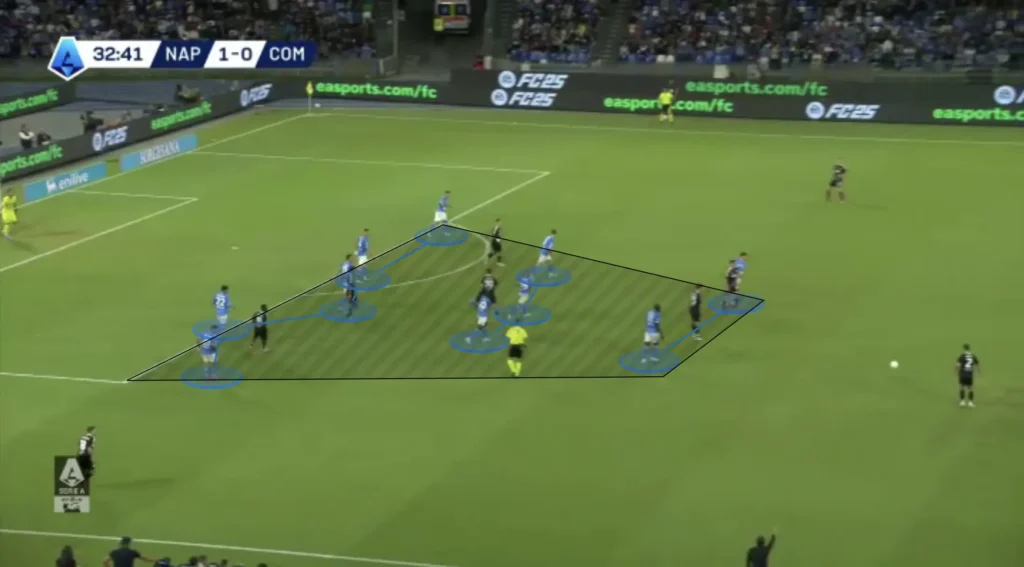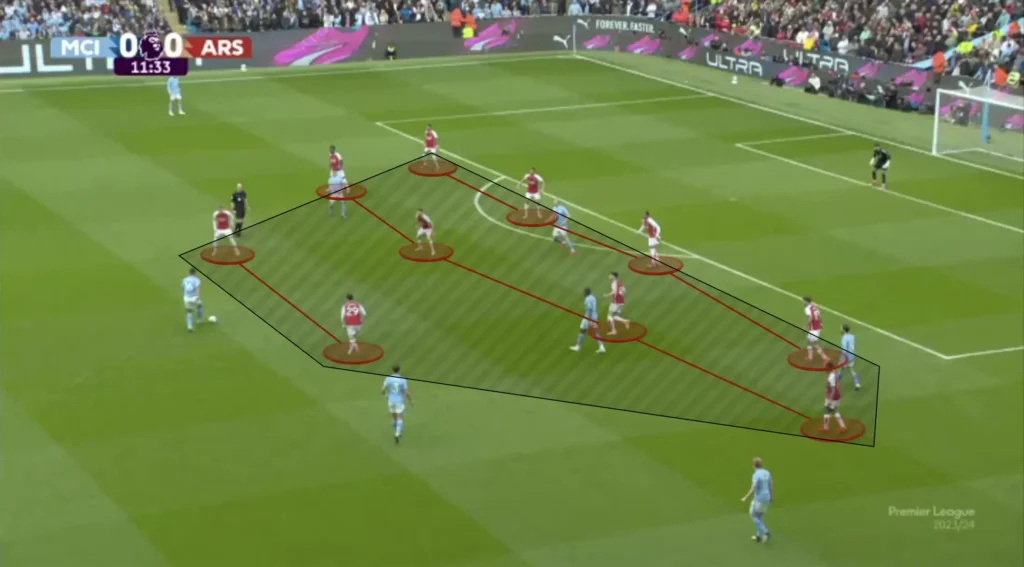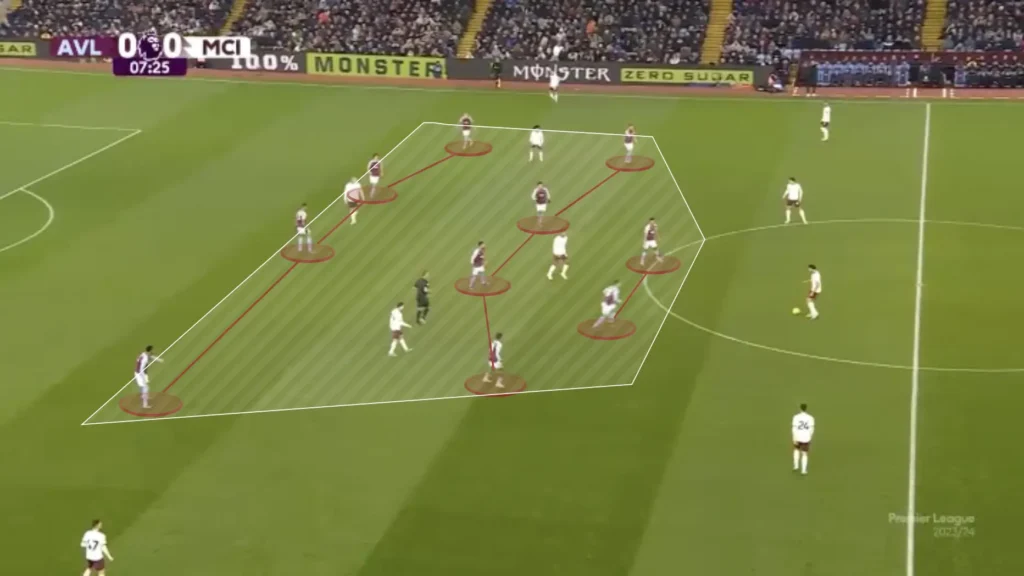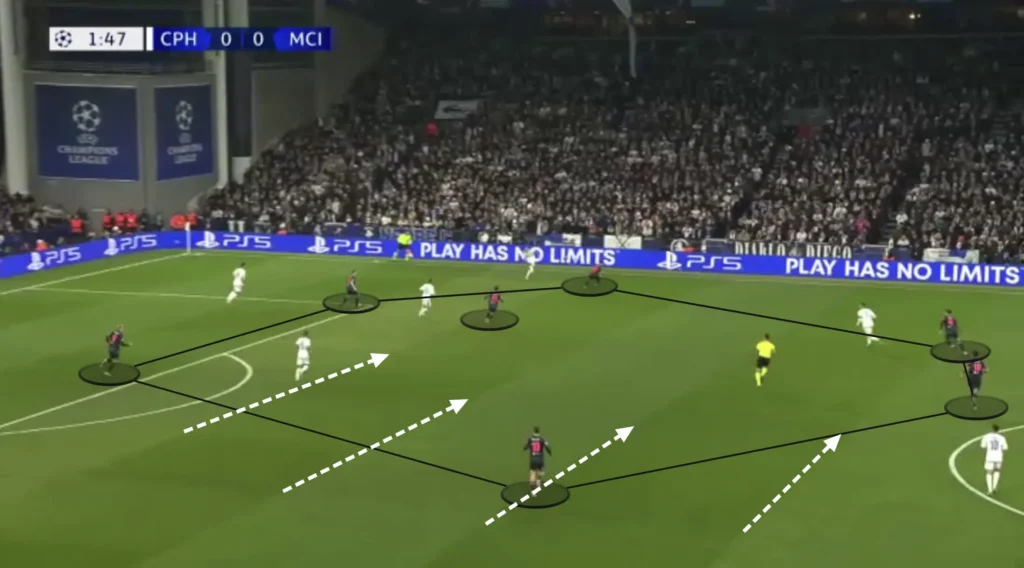In modern football, the ability to defend effectively as a unit often separates elite teams from the rest. One of the most essential principles that underpins strong team defending is compactness. This concept goes beyond simply “sitting deep” or “defending narrow.” It involves structured coordination, intelligent positioning, and a deep understanding of space. In this article, we break down the tactical principle of compactness in defense—what it means, how teams achieve it, and why it’s so critical in the game today.
What Is Compactness in Football?
Compactness in a defensive context refers to the idea of reducing the amount of space available for the attacking team to operate in. Defenders and midfielders position themselves in a way that limits the vertical (length) and horizontal (width) space between and within the lines of the team’s shape. This makes it extremely difficult for the opposition to progress the ball through central areas or find time and space in dangerous zones.
Instead of spreading out to cover the entire pitch, compact defensive teams focus on protecting the most valuable areas—particularly the central zones in front of goal.

Why Compactness Matters
Football is a game of space. Attacking players seek to find or create it. Defenders try to limit or deny it. Compactness directly challenges attackers’ ability to play through the thirds and create goal-scoring chances.
Here’s why compactness is so effective:
- It reduces passing lanes between the lines
- It limits the opponent’s ability to combine through central areas
- It increases the likelihood of regaining possession, especially through pressing traps or interceptions
- It forces the opposition wide, where the angle to goal is narrower and the threat level is lower
When executed well, compactness makes a team hard to break down and significantly raises their chances of winning the ball in areas where they can counter-attack quickly.
Horizontal and Vertical Compactness
Compactness works in two main dimensions: horizontal and vertical.
Horizontal
This refers to how narrow a team is across the width of the pitch. A horizontally compact team keeps its defensive and midfield lines close together from side to side, usually focusing on protecting the central corridor. It often leaves the flanks more open, especially if the ball is on the opposite wing, but that’s a calculated risk.
- Horizontal compactness denies space for central combinations and through-balls
- It discourages central penetrations, forcing play toward the wings
Vertical
This measures the distance between a team’s most advanced and deepest defensive players—the vertical distance between the forward and defensive lines.
- A vertically compact shape minimizes the gaps between the defensive, midfield, and attacking lines
- It prevents attackers from operating in the pockets between lines
- It enhances pressing coordination because players are within reach to support or cover each other
Elite defensive teams maintain both horizontal and vertical compactness simultaneously, requiring discipline, communication, and collective understanding.
Compactness Within Different Defensive Blocks
Compactness isn’t exclusive to low-block defending. Teams across all pressure heights—high-block, mid-block, and low-block—must apply the principle of compactness to remain cohesive.
Low-Block
In a low-block, teams naturally sit deeper and closer to goal. This makes compactness easier to maintain, especially vertically, since the lines are already condensed. Many teams use a 1-4-4-2 or 1-5-4-1 shape in a low-block to protect the central zone.
- The team defends space in front of the box
- Horizontal compactness is key to shutting down through-balls and shots from outside the box
- The risk is that opponents can dominate possession and deliver crosses, so teams must also defend the width reactively

Mid-Block
In a mid-block, teams try to maintain compactness while still engaging the opponent in the middle third. This approach often uses a 1-4-2-3-1 or 1-4-4-2 shape.
- The forwards apply light pressure while the midfield line covers central passing lanes
- The compact shape invites the opposition to circulate the ball but blocks progression
- Compactness helps trigger pressing traps when the ball is forced wide or backwards

High-Block
Pressing high doesn’t mean abandoning compactness. In fact, vertical compactness becomes even more crucial when a team defends high.
- The backline must push up aggressively to keep the team short
- The midfield and forward lines must remain connected to avoid leaving exploitable gaps
- Teams like Manchester City and RB Leipzig execute high, compact pressing shapes to win the ball near the opponent’s goal

Compactness and Defensive Transitions
Teams that maintain compactness during defensive transitions are harder to break down in moments of chaos. When possession is lost, compact teams:
- Collapse centrally to deny direct counter-attacks
- Use counter-pressing (gegenpressing) to recover the ball while the team is still tightly packed
- Delay the opponent’s progression until defensive structure can be regained
Teams that spread out too much during their own possession risk being punished in transitions because they lack compactness when the ball is lost.
How to Train Compactness
Compactness doesn’t happen by accident—it must be coached and rehearsed through consistent training methods. Here are a few approaches coaches use to instill compactness:
1. Functional Positioning Drills
Coaches set up scenarios with out-of-possession units (back 4 or back 5, midfield 3 or 4) to work on compact shapes versus attacking patterns. Players adjust their distances and spacing based on ball location.
2. Small-Sided Games with Positional Constraints
By limiting the size of the pitch and introducing central scoring zones, players are forced to stay compact and block dangerous areas.
3. Shadow Play
Without opposition, the team rehearses defensive movements as a unit—shifting side to side, stepping up, or dropping deeper—while maintaining spacing between lines and players.
4. Video Analysis
Reviewing footage helps players understand when they become stretched and how to correct spacing errors. Teams like Atletico Madrid under Diego Simeone and Aston Villa under Unai Emery have famously used video to reinforce defensive cohesion.
Compactness vs. Aggression: Finding the Balance
Compactness isn’t about passivity or sitting deep with no pressure. In fact, some of the most aggressive pressing teams are also among the most compact.
- Liverpool under Jürgen Klopp and Bayern Munich under Hansi Flick used compactness to support intense pressing and counter-pressing
- These teams stayed tight vertically and horizontally, making it hard for the opponent to escape pressure
- Compactness supports aggression by ensuring players are always in support range to swarm the ball
The key is balancing spatial control with tactical aggression. Compactness gives a platform to press effectively and recover the ball higher up the pitch.
Conclusion
Compactness in defense is one of football’s most fundamental yet misunderstood principles. It’s not simply about “parking the bus” or defending in numbers—it’s about intelligent spatial management, collective behavior, and coordinated movement.
Whether pressing high or sitting deep, the best defensive teams remain compact to:
- Control central spaces
- Protect goal-dangerous zones
- Disrupt passing options
- Support effective pressing and transitions
In an era where space is everything, compactness is the glue that holds defensive structure together. Teams that master it gain a significant tactical edge—not just in stopping goals but in setting up the next attack.
